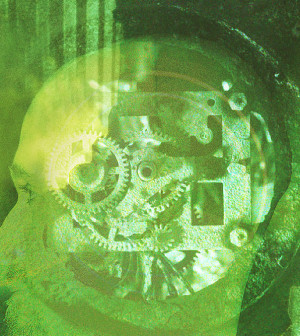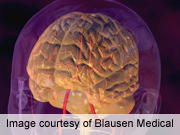- Skip Storing This Everyday Product in the Fridge Door
- Green Tea + B3 Pairing May Boost Brain Health
- Navigating Your Midlife Crisis: Embracing New Possibilities
- City Raccoons Showing Signs of Domestication
- Mapping the Exposome: Science Broadens Focus to Environmental Disease Triggers
- One Week Less on Social Media Linked to Better Mental Health
- Your Brain Changes in Stages as You Age, Study Finds
- Some Suicide Victims Show No Typical Warning Signs, Study Finds
- ByHeart Formula Faces Lawsuits After Babies Sickened With Botulism
- Switch to Vegan Diet Could Cut Your Greenhouse Gas Emissions in Half
Researchers Create Functional 3-D Brain-Like Tissue


Researchers who created functional 3-D brain-like tissue say it could help scientists find new treatments for brain injuries and diseases and improve knowledge about normal brain function.
The tissue, which can be kept alive in the laboratory for more than two months, is structurally similar to tissue in a rat’s brain. It’s also functionally like brain tissue.
In early experiments with the tissue, researchers used it to study chemical and electrical changes that occur immediately after brain injury and the changes that occur in response to a drug.
The tissue was developed at Tuft University’s Tissue Engineering Resource Center, which is funded by the U.S. National Institute of Biomedical Imaging and Bioengineering (NIBIB). The research is described in an article published online Aug. 11 in the Proceedings of the National Academy of Sciences.
“This work is an exceptional feat,” Rosemarie Hunziker, program director of Tissue Engineering at NIBIB, said in an agency news release. “It combines a deep understand of brain physiology with a large and growing suite of bioengineering tools to create an environment that is both necessary and sufficient to mimic brain function.”
This tissue offers advantages over using live animals to study brain injury, according to project leader David Kaplan, a professor of engineering at Tufts and director of the Tissue Engineering Resource Center.
In live animals, researchers can’t start assessing the effects of a brain injury immediately after it occurs. That’s because the animal’s brain has to be dissected and prepared for experiments.
With the new 3-D brain-like tissue, “you can essentially track the tissue response to traumatic brain injury in real time,” Kaplan said. “Most importantly, you can also start to track repair and what happens over longer periods of time.”
The longevity of the tissue also makes it valuable for studying brain diseases and disorders.
“The fact that we can maintain this tissue for months in the lab means we can start to look at neurological diseases in ways that you can’t otherwise because you need long timeframes to study some of the key brain diseases,” Kaplan said.
He and his colleagues are now trying to find ways to make the tissue model even more brain-like.
More information
The U.S. National Library of Medicine has more about brain diseases.
Source: HealthDay
Copyright © 2025 HealthDay. All rights reserved.










